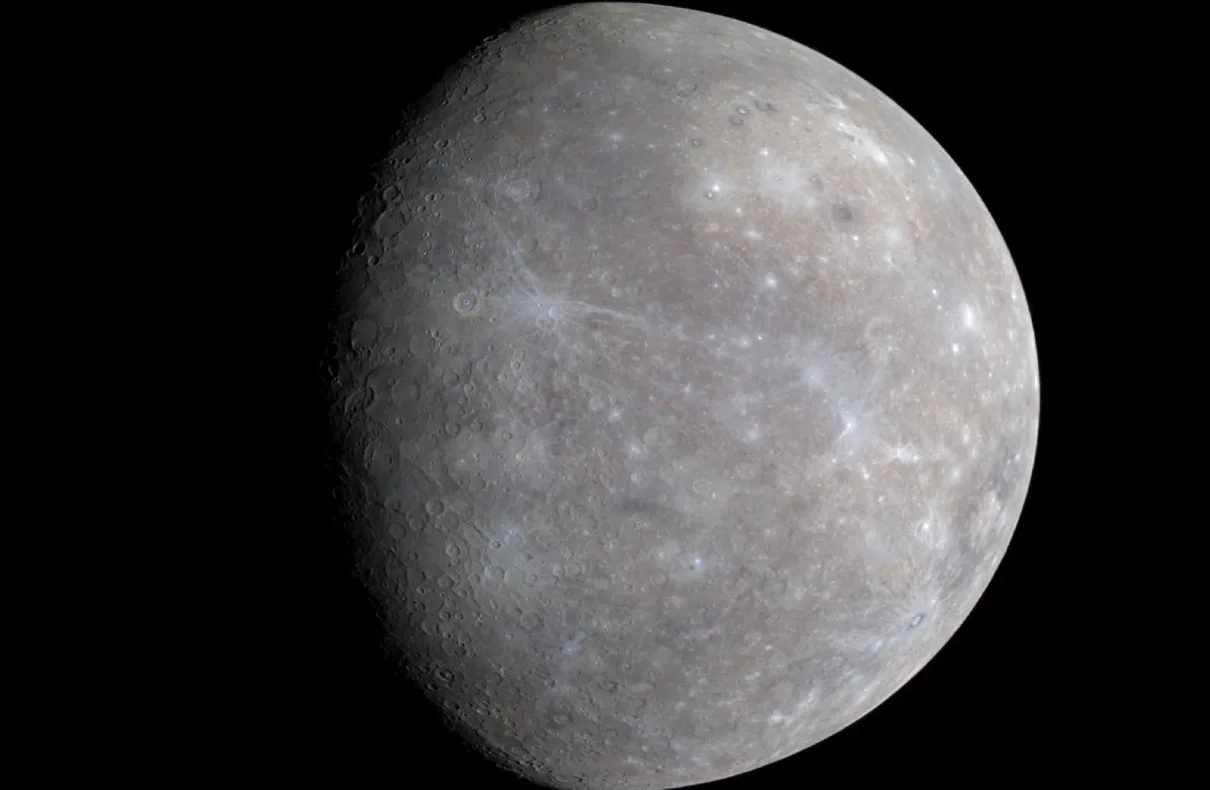In the celestial neighborhood that we call our solar system, each planet has its own unique story. One of the most enigmatic celestial bodies is Mercury, the sun’s closest companion. Recent discoveries suggest that this tiny planet could have been as large as Earth in its early life.
Mercury, named after the Roman deity Mercury, the messenger of the gods, is a fascinating planet, both in terms of its physical characteristics and its orbital behavior. Mercury is the smallest planet in our solar system and also the closest to the sun. Despite its small size, the planet has a massive iron core, and its surface is pockmarked with craters, similar to our moon.
Mercury’s close proximity to the sun leads to extreme temperature variations. During the day, the temperature can rise to a scorching 800 degrees Fahrenheit (427 degrees Celsius). The lack of an atmosphere to retain heat means nighttime temperatures can drop to a chilling -290 degrees Fahrenheit (-180 degrees Celsius).
Mercury orbits the sun at a breakneck pace. It completes a full orbit in just 88 Earth days, the shortest year of any planet in our solar system. This rapid orbit, combined with its proximity to the sun, makes studying Mercury a challenging task for scientists.
Due to these challenges, scientists have turned to Earth to find clues about Mercury’s composition. Nicola Mari, a planetary geologist at the University of Pavia in Italy, is one such scientist. Mari studies the formation and evolution of our solar system’s neighbors. On a recent visit to Cyprus, Mari made an astonishing discovery that suggests Mercury may have once been as large as Earth.
Mari’s findings, while still in the realm of hypothesis, paint an intriguing picture of Mercury’s early life. If this theory holds true, it could mean that Mercury was once a much larger planet, with a size comparable to Earth. Over time, Mercury could have lost its outer layers due to the sun’s intense gravity, reducing it to its current size.
This discovery could have significant implications for our understanding of the formation and evolution of our solar system. It could also shed light on the processes that lead to the formation of planetary cores and the distribution of elements in the solar system.
While this discovery is exciting, more research is needed to confirm this theory. Future missions to Mercury, like the BepiColombo mission, a joint venture between the European Space Agency (ESA) and the Japan Aerospace Exploration Agency (JAXA), will hopefully provide more data to support or refute this theory.
